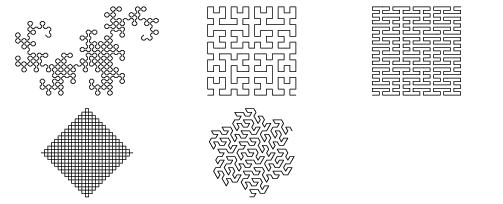Plane-Filling Function A space-filling function which maps a one-dimensional interval into a two-dimensional area. Plane-filling functions were thought to be impossible until Hilbert discovered the Hilbert curve in 1891. Plane-filling functions are often (imprecisely) defined to be the "limit" of an infinite sequence of specified curves which "fill" the plane without "holes," hence the more popular term plane-filling curve. The term "plane-filling function" is preferable to "plane-filling curve" because "curve" informally connotes "function graph" (i.e., range) of some continuous function, but the function graph of a plane-filling function is a solid patch of two-space with no evidence of the order in which it was traced (and, for a dense set, retraced). Actually, all that is needed to rigorously define a plane-filling function is an arbitrarily refinable correspondence between contiguous subintervals of the domain and contiguous subareas of the range. True plane-filling functions are not one-to-one. In fact, because they map closed intervals onto closed areas, they cannot help but overfill, revisiting at least twice a dense subset of the filled area. Thus, every point in the filled area has at least one inverse image. |